Comments / Questions (12)
![]() Claude Caron wrote:
Claude Caron wrote:
Pour le tour de cou, J’ai fait une petite erreur dans mon précédent courriel, J’ai bien monté 266 mailles et tricoter 2 mailles end.et 5 mailles env. (Il y a un 2 de trop dans mon précédent message)
11.01.2025 - 19:32DROPS Design answered:
Bonjour Mme Caron, pensez à bien vérifier vos côtes au 1er tour, car vous devez avoir 38 fois au total (2 m end, 5 m env) soit 38x7=266. Bon tricot!
13.01.2025 - 11:15
![]() Claude Caron wrote:
Claude Caron wrote:
Bonjour! Je suis à faire le tour de cou, j’ai bien 266 mailles et,2 tricoter 2 mailles end.5 mailles env. J’ai bien vérifié mais,j’ai une maille de trop à la fin du rang, Le montage devrait être 265 mailles?
11.01.2025 - 19:26
![]() Marie wrote:
Marie wrote:
Hei, har dere oppskrift på lua? 😊 Supert sett å strikke!
29.03.2021 - 19:57DROPS Design answered:
Hei Marie, Hvis du søker etter Mariuska, mønster nr. u-774, får du oppskrift for både genser og lue i Moon Valley mønster. God fornøyelse!
30.03.2021 - 07:56
![]() Louise Henrie wrote:
Louise Henrie wrote:
Hi, on the wrist warmers, I just realized I probably misunderstood what you mean by "worked from the top down". I was hoping this meant from fingers to wrist, but I guess I'm doing it upside down, thumb gusset and measurements don't make sense that way.
23.12.2020 - 14:54DROPS Design answered:
Dear Mrs Henrie, you are right, these wrist warmers are worked from the wrist towards the edge round fingers. Happy knitting!
04.01.2021 - 07:25
![]() Margarita wrote:
Margarita wrote:
Hola, no entiendo muy bien para hacer el dedo del miton, entiendo que voy aumentando a los dos lados del tejido y despues es por donde se cose todo el miton, es asi. Gracias
28.11.2020 - 19:43DROPS Design answered:
Hola Margarita, el mitón se trabaja en redondo, no hay costuras. Los aumentos se hacen antes de trabajar el pulgar para adaptarlo a la forma de la mano.
29.11.2020 - 18:59
![]() Louise wrote:
Louise wrote:
Skal det økes for tommel kile i mønsteret ?
03.08.2020 - 08:01
![]() Dan wrote:
Dan wrote:
Love this brilliant cosy set. I made it on my Brother standard-gauge knitting machine by splitting it in two. Used your Drops Merino yarn in same fab colours and it looks super cool. Love your round-neck Fair Isle designs, but can't do them on my knitting machine as I have 200 sts max. Might try and have a go at doing a yoke sideways and stitching it to the rest afterwards :-) such fun!
11.10.2019 - 15:24
![]() Elena wrote:
Elena wrote:
Negli scalda polsi, mentre lavoro il diagramma A2, quando cambio colore dopo aver fatto, ad esempio, due giri con il colore rosa argento e poi passo ad un altro colore, come faccio a non lasciare un “buco” nel lavoro tra la prima e l’ultima maglia del giro? Grazie, Elena
15.11.2018 - 12:38
![]() Mette Bülow wrote:
Mette Bülow wrote:
Förstår inte riktigt att man skall ta ut 28 maskar innan man stickar resår i halsen. Det har blivit ganska löst i halsen. Jag undrar också hur man får den att ligga så där fint runt. Min kryper uppåt så mönstret nästan ligger runt halsen :) Mvh Mette
22.12.2016 - 19:51DROPS Design answered:
Hej Mette, Jo men man måste öka först, då resåren drar ihop arbetet. Lycka till!
16.03.2017 - 11:16
![]() Sandra Martins wrote:
Sandra Martins wrote:
Hi there, is there also a pattern for the beanie hat? Thanks, Sandra
29.06.2016 - 19:46DROPS Design answered:
Dear Sandra, you can find the hat pattern in DROPS 165-23. Happy knitting!!
29.06.2016 - 21:31
Moon Valley Set |
|||||||||||||||||||
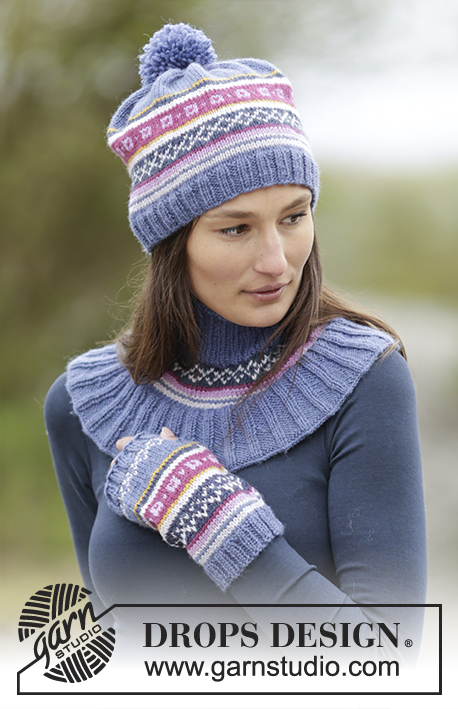 |
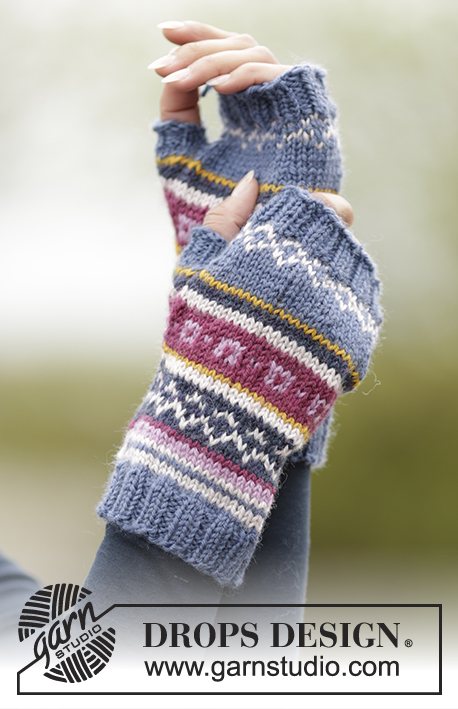 |
||||||||||||||||||
Set consists of: Knitted DROPS neck warmer and wrist warmers with Norwegian pattern in ”Karisma”
DROPS Extra 0-1264 |
|||||||||||||||||||
|
PATTERN: See diagrams A.1 to A.3. Work entire pattern in stockinette st. INCREASE TIP: Inc 1 st by making 1 YO. On next round K YO twisted to avoid holes. ---------------------------------------------------------- NECK WARMER: Cast on 266-294 sts on circular needle size 3.5 mm / US 4 with denim blue and K 1 round. Then work rib = K 2/P 5. After 2-3 cm / 3/4"-1 1/8"'' dec all 5 P to 4 P by P the first 2 sts in every P-section tog = 228-252 sts. When rib measures 4-5 cm / 1½"-2'', dec all 4 P to 3 P by P the last 2 sts in every P-section tog = 190-210 sts. Repeat dec at beg of every P-section when rib measures 6-8 cm / 2½"-3" = 152-168 sts. Continue rib K 2/P 2 until piece measures 8-10 cm / 3"-4''. K 1 round with denim blue while dec 40-48 sts evenly = 112-120 sts. Switch to circular needle size 4 mm / US 6 and work pattern in the round according to diagram A.1. When A.1 has been worked, neck warmer measures approx. 14-16 cm / 5½"-6 1/4". Switch to circular needle size 3.5 mm / US 4 and K 1 round with denim blue while at the same time inc 28-24 sts evenly - READ INCREASE TIP = 140-144 sts. Then work rib in the round = K 2/P 2 for 8-10 cm / 3"-4'', bind off with K over K and P over P. The neck warmer measures approx. 22-26 cm / 8 3/4"-10 1/4" vertically. ---------------------------------------------------------- WRIST WARMERS: Worked in the round on double pointed needles from top down. RIGHT WRIST WARMER: Cast on 52 sts on double pointed needles size 3 mm / US 2.5 with denim blue and K 1 round. Then work rib = K 2/P 2 for 2.5 cm / 7/8''. Switch to double pointed needles size 3.5 mm / US 4 and K 1 round while at the same time dec 4 sts evenly = 48 sts. Then continue pattern in the round according to diagram A.2. After A.2 continue with denim blue. AT THE SAME TIME when piece measures 10 cm / 4'' beg inc for thumb gusset and inc 1 st on each side of 2nd st on round – READ INCREASE TIP (= 2 sts inc). Repeat inc every other round a total of 5 times - NOTE: Inc on each side of inc sts for thumb gusset, i.e. there are 2 sts more between YOs for every inc = 11 sts for thumb gusset and 58 sts in total. When piece measures 14 cm / 5½'', slip the 11 sts for thumb gusset on 1 stitch holder and cast on 1 new st over sts on stitch holder = 48 sts on needle. Continue in stockinette st with denim blue and at the same time dec 4 sts evenly on 1st round = 44 sts. When piece measures 15 cm / 6'', work pattern in the round according to diagram A.3. After A.3 K 2 round with denim blue - at the same time dec 4 sts evenly on last round = 40 sts remain on needle. Switch to double pointed needles size 3 mm / US 2.5 and work rib = K 2/P 2 for 2.5 cm / 7/8''. Then loosely bind off sts with K over K and P over P. Wrist warmer measures approx. 19 cm / 7½''. THUMB: Slip the 11 sts from stitch holder on double pointed needles size 3 mm / US 2.5 and pick in addition up 1 st behind the thumb with denim blue = 12 sts. Work 4 rounds rib = K 2/P 2 and then loosely bind off with K over K and P over P. LEFT WRIST WARMER: Work as right but reversed, i.e. inc for thumb on each side of last st on round (instead of each side of second st on round). |
|||||||||||||||||||
Diagram explanations |
|||||||||||||||||||
|
|||||||||||||||||||
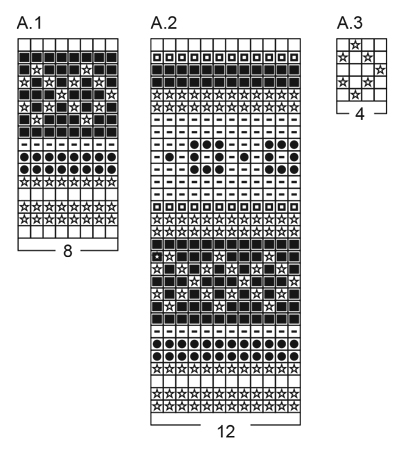 |
|||||||||||||||||||
Have you finished this pattern?Tag your pictures with #dropspattern or submit them to the #dropsfan gallery. Do you need help with this pattern?You'll find 23 tutorial videos, a Comments/Questions area and more by visiting the pattern on garnstudio.com. © 1982-2025 DROPS Design A/S. We reserve all rights. This document, including all its sub-sections, has copyrights. Read more about what you can do with our patterns at the bottom of each pattern on our site. |
|||||||||||||||||||







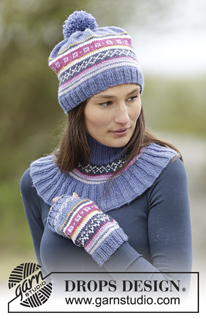
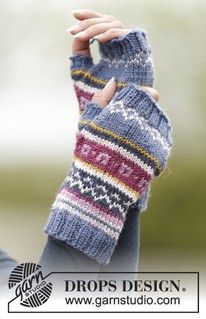



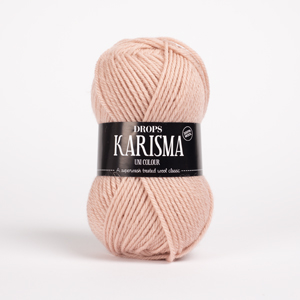
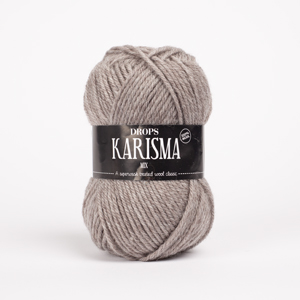


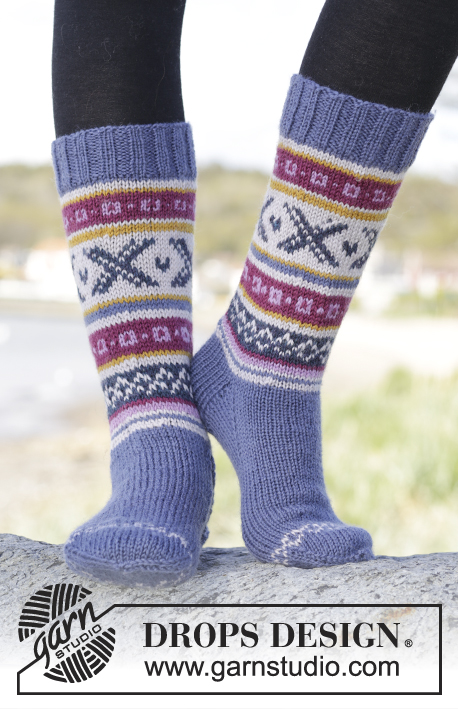
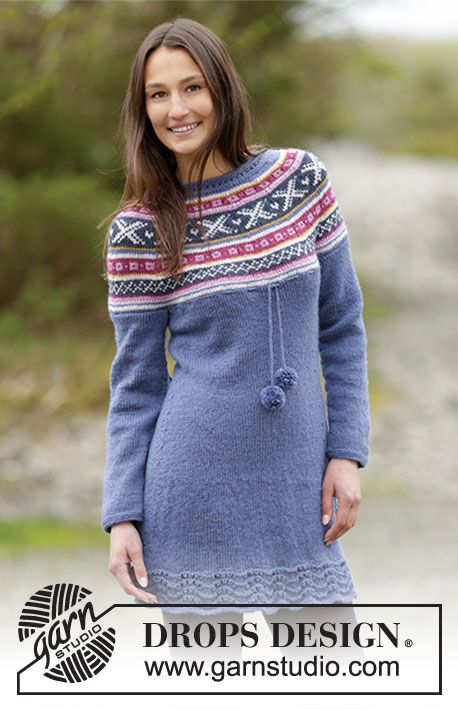
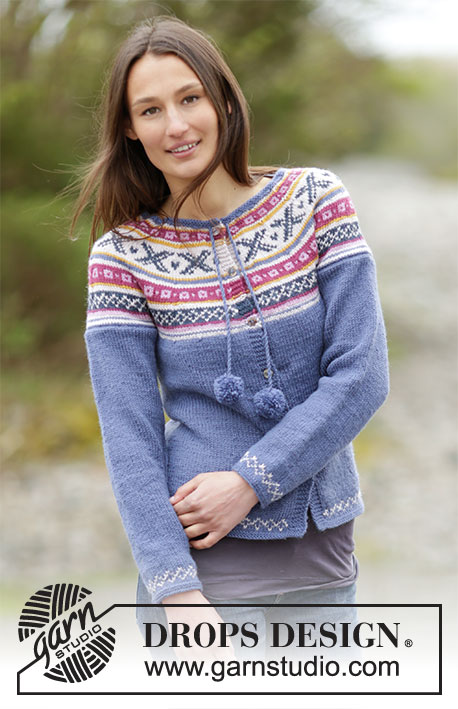








































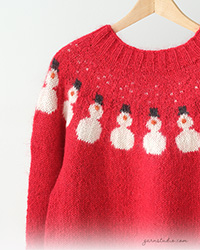
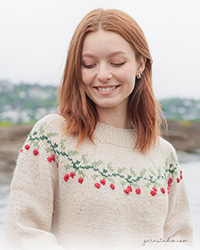
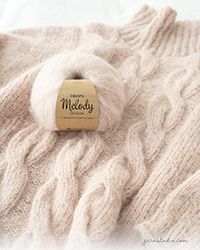
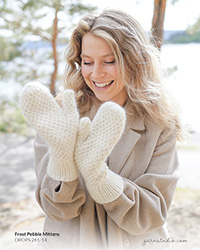
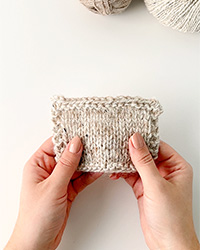
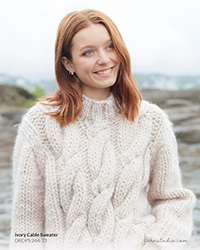
Post a comment to pattern DROPS Extra 0-1264
We would love to hear what you have to say about this pattern!
If you want to leave a question, please make sure you select the correct category in the form below, to speed up the answering process. Required fields are marked *.